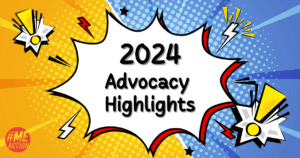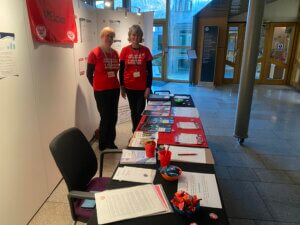In Dr. Albright’s study of the families of ME/CFS patients in Utah, risk of ME was found to be 2.7 times greater in first-degree relatives of ME patients, 2.3 times greater in second-degree relatives, and 1.93 times greater in third-degree relatives. This familial clustering is the basis for new research in Norway, where scientists are doing their best to discover what genes cause or contribute to the development of myalgic encephalomyelitis. One of the areas of interest is the HLA gene, which has been linked to many autoimmune conditions, including lupus, Sjögren’s Syndrome, and autoimmune hepatitis. Researchers at Oslo University Hospital are currently examining the HLA gene in ME.
Research is also underway at Haukeland University, where Fluge, Mella, and Bruland are finding genetic mutations that family members with ME have in common. By looking at the genes of healthy and unhealthy members of the same families, they will be able to start identifying genetic risk factors for the illness.
Researchers are using exome sequencing in order to determine where mutations occur in the genes of people with ME. The exome is the part of DNA that codes for all the proteins in the patient’s body. Though the exome makes up only 1.5% of the DNA in the cell, approximately 85% of disease-causing mutations are located there. The researchers are also examining the flanking intron — the DNA that precedes and follows the exon — in case mutations occur there.
Fluge et al. have completed exome sequencing for 18 people from two different families, and have begun complete exome sequencing in a third. However, they have already discovered a genetic mutation that may have the potential to be the culprit: a mutation that occurs in 1 of every 500 people in the European general population. This same variant has been observed in several of the subjects in their Rituximab study.
In order to study this variant in more detail, the researchers performed skin biopsies on ME patients — since all the patients’ cells will have this same mutation — and used these to cultivate samples of cells with the mutation.
Finally, Fluge et al. created cells in which this mutation was inserted, using a process called gene transfection, and dramatically increased the effect of the mutation on the cell. The researchers hope that by increasing the gene’s activity, they can better observe the effect the mutation has on cellular processes.
Fluge et al. believe that the genetic mutations they uncover will have a direct effect on which symptoms predominate in each family. They are also hopeful that, by finding the right mutation, they can better understand the mechanism of the disease. Hopefully, these early findings will be repeated in other families Fluge and Mella study, as their research continues.

Why You Should Gift to #MEAction this Season
As #MEAction prepares for the year ahead, I’m thrilled to share with you a few highlights from the incredible advocacy projects our staff has undertaken this past year. As you prepare for the holidays, I humbly ask that you consider making a gift to #MEAction today to keep our work going strong! Donate We Organized




